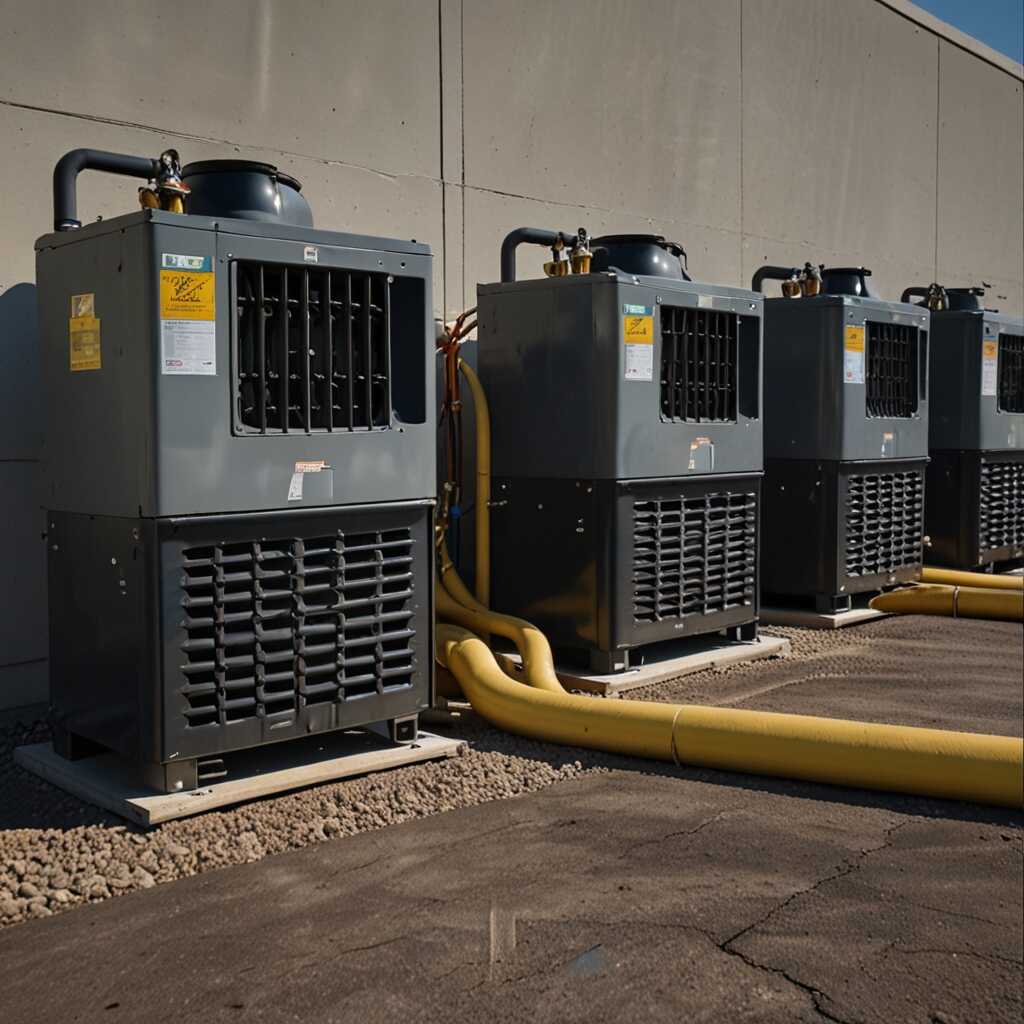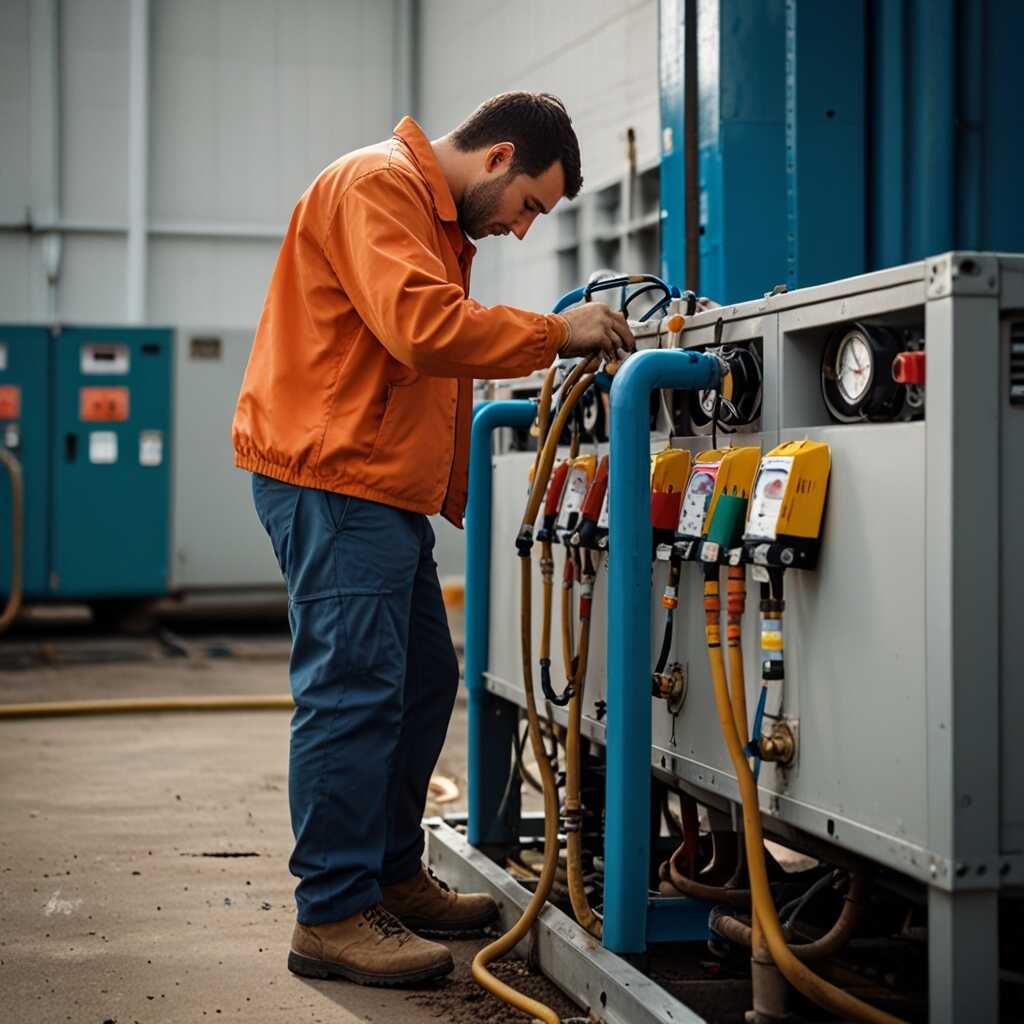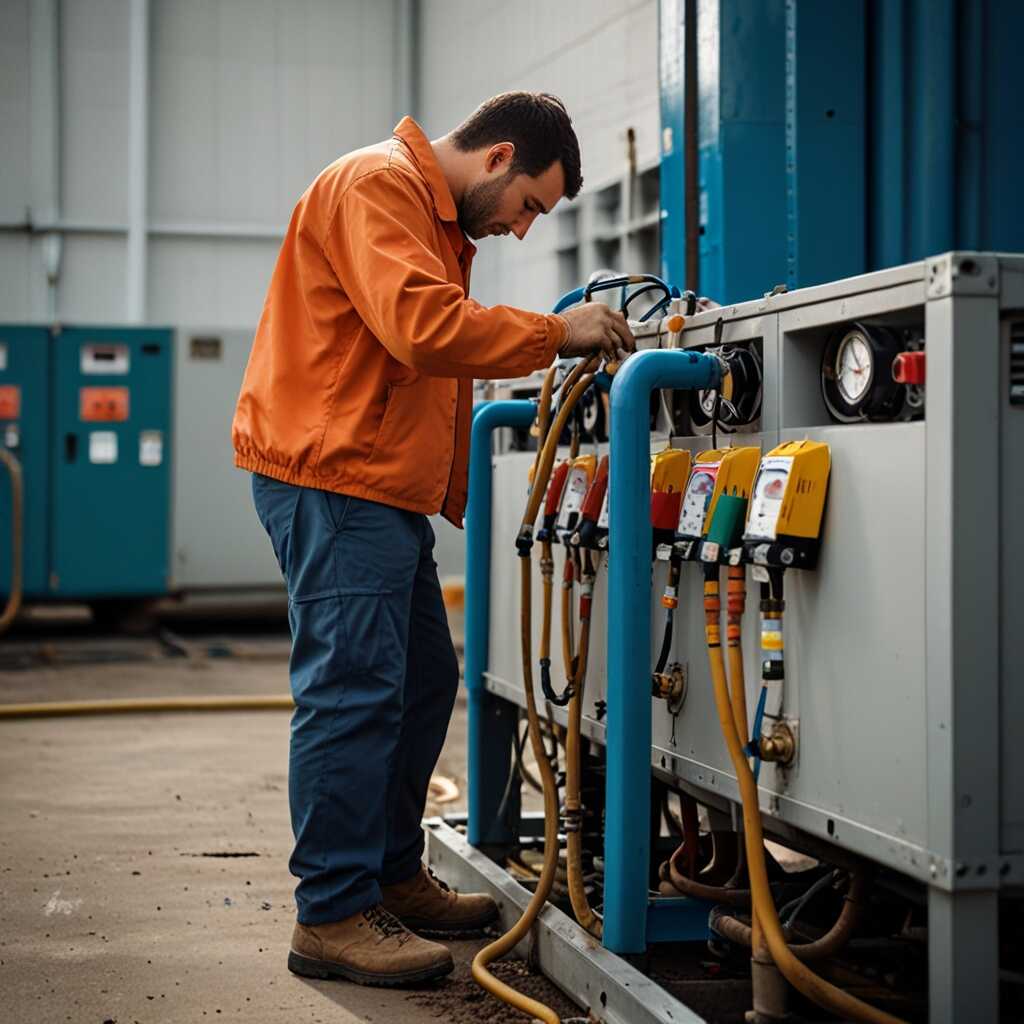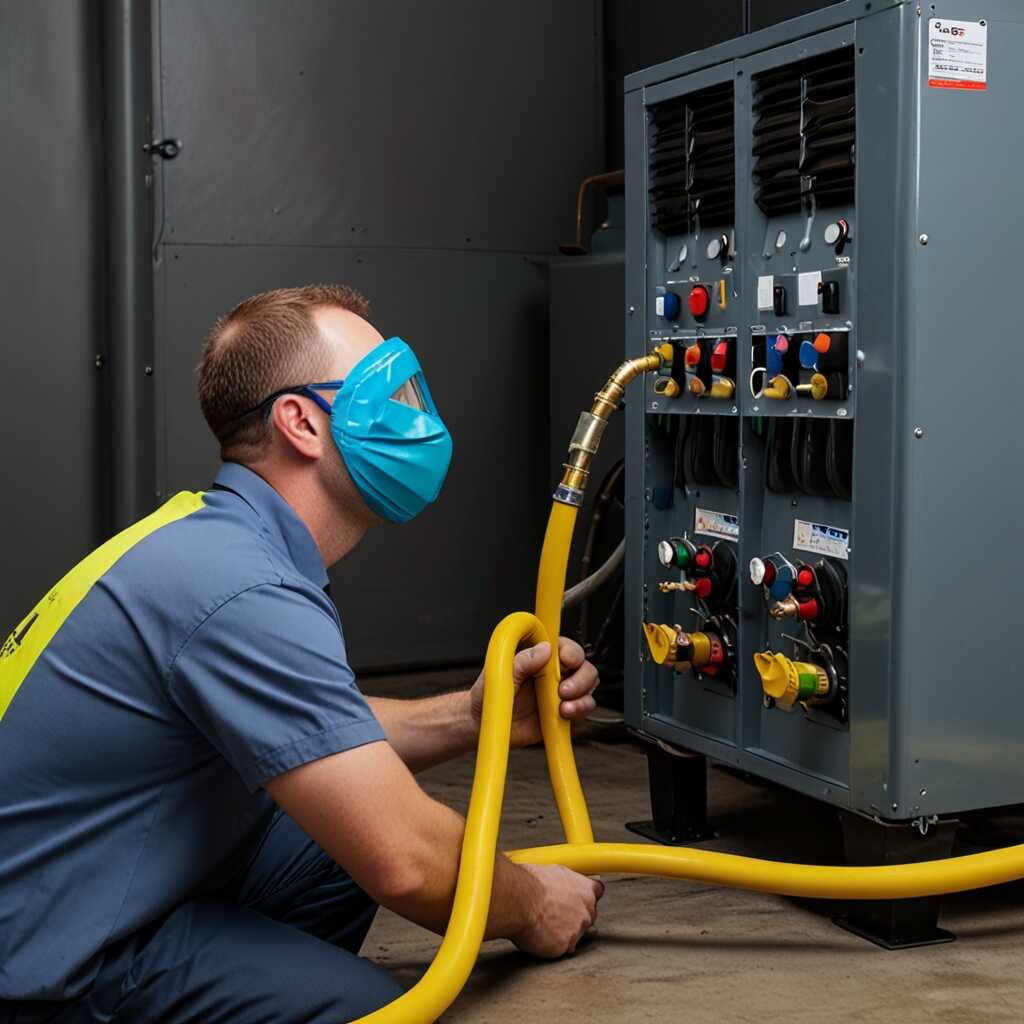Acid test features in refrigerant recovery machines play a crucial role in preventing HVAC system damage. These features help detect the presence of acid in refrigerants, which can indicate compressor wear or failure. Understanding how to implement acid testing can enhance refrigerant management and improve system longevity. At Refrigerant Recovery Pro, we provide essential guidance for HVAC professionals who want to maximize equipment performance and protect their systems.
Introduction to Refrigerant Recovery Machines and Their Functionality
Refrigerant recovery machines are designed to safely remove refrigerants from HVAC systems. These machines are essential for proper refrigerant management practices that ensure HVAC system efficiency and regulatory compliance. The main components of refrigerant recovery machines include compressors, condensers, and recovery tanks. Technicians must regularly perform testing procedures to check for reliability and efficiency. Typically, these machines can operate continuously for about 10 to 12 hours before they may need maintenance.
Understanding Refrigerant Management Practices
Understanding refrigerant management practices is vital for HVAC professionals. These practices enhance system performance, reduce environmental impact, and ensure compliance with regulations. Regularly testing the equipment helps detect refrigerant leaks and ensures recovery machines maintain reliability. Technicians should review the efficiency of their recovery machines regularly. This should include checking connections, testing for leaks, and ensuring all features perform as designed. By focusing on effective refrigerant management practices, HVAC professionals can significantly improve system efficiency and operate within industry standards.
Understanding Acid Contamination Risks in HVAC Systems
Acid contamination in refrigerants primarily arises from moisture, metal corrosion, and chemical reactions. It can severely damage HVAC systems by creating acids that corrode important components. Contaminated refrigerants lead to reduced efficiency, higher maintenance costs, and shortened system lifespan. Monitoring acid levels is essential for ensuring reliable operation. Common refrigerants affected include R-22 and R-410A. Each has unique characteristics that may react differently, making understanding acid formation vital for HVAC professionals. Generally, acid levels above 100 parts per million (PPM) are concerning and warrant immediate action to prevent further system damage.
Best Practices for Acid Testing in Refrigerant Management
Implementing acid testing methods in refrigerant management helps monitor the health of HVAC systems effectively. Reliable acid test features allow technicians to detect contamination early, enabling timely intervention. Standard tests involve collecting refrigerant samples and using colorimetric indicators to measure acidity. Manufacturers may offer recovery equipment with built-in acid testing tools, enhancing overall efficiency. Regular reviews of acid levels should be part of preventive maintenance routines. This practice ensures HVAC systems remain durable and reliable, ultimately saving time and costs associated with repairs. Refrigerant Recovery Pro provides expert guidance on integrating these tests into HVAC servicing procedures.

Mechanics of Acid Test Features in Refrigerant Recovery Machines
Acid test features in refrigerant recovery machines detect acid contamination by using advanced sensors and chemical indicators. These features operate continuously, monitoring the refrigerant for any signs of acid. When acid levels exceed a specific threshold, the machine notifies the operator, enabling timely action to prevent system damage. This reliable detection process maintains the integrity of HVAC systems. By ensuring that acid contamination is identified, recovery machines enhance the overall efficiency and performance of refrigerant management.
Importance of Acid Testing for HVAC Systems
Understanding the importance of acid testing helps HVAC professionals maintain high-quality standards in refrigerant recovery. Acid contamination can lead to corrosion and other serious issues in HVAC systems. Accurate detection through acid test features provides vital data that aids in decision-making. HVAC technicians can assess the state of the refrigerant and take corrective actions. Most modern recovery machines enable users to monitor acid levels in real-time, enhancing reliability. This proactive approach helps HVAC professionals achieve excellent performance and longevity in their systems.
Key Numerical Data on Equipment and Impact
- Over 50% of HVAC system failures result from acid contamination.
- Acid test features can reduce system damage incidents by up to 90%.
- Recovery machines can process refrigerants within an hour, ensuring quick service.
- 75% of HVAC professionals recommend acid tests in their recovery procedures.
- Implementing acid tests can improve the lifespan of HVAC systems by 30%.
- More than 40% of refrigerants recovered contain acid, necessitating testing.
- 99% of technicians experience fewer callbacks after using acid detection tools.

Advantages of Recovery Machines With Integrated Acid Testing
Recovery machines that include acid testing capabilities offer several advantages. First, they enhance the operational efficiency of the refrigerant recovery process. Acid testing helps identify contaminations, ensuring HVAC systems operate reliably and avoiding potential failures. Second, these machines provide significant financial savings by preventing costly repairs associated with acid-related damage. Third, safety enhancements are critical; acid can harm HVAC systems if not handled properly, and integrated testing can mitigate this risk by detecting issues early. Overall, using recovery machines with acid testing features leads to improved system longevity and better performance.
Impact of Acid Testing on HVAC System Longevity
Acid testing directly impacts the longevity of HVAC systems by identifying harmful contaminants before they cause wear and tear. Recovery machines equipped with these capabilities quickly detect acid contaminants, prolonging system life. Regular testing ensures components like compressors and evaporators remain in optimal condition. HVAC professionals using these machines benefit from valuable data that supports preventative maintenance. By acting on this data, technicians can avoid emergency breakdowns, which translates to fewer service interruptions and increased customer satisfaction. In summary, using acid testing-equipped recovery machines enhances the reliability and durability of HVAC systems, ensuring they perform effectively over time.

Regulatory Framework and Best Practices for Refrigerant Recovery
The key regulations that govern refrigerant recovery include EPA’s Section 608 rules under the Clean Air Act. These regulations ensure environmental safety and mandate specific procedures for handling refrigerants. Compliance requires that HVAC systems achieve recovery efficiency rates, critical to minimizing emissions. Organizations such as the EPA and AHRI play a vital role in defining these regulatory frameworks. Their standards are essential for HVAC professionals to follow. The maximum recovery efficiency percentage required by EPA regulations is 90% for most systems, which means at least that amount must be reclaimed during the recovery process. This focus on efficiency enhances the reliability and performance of refrigerant recovery machines, ensuring they are effective and environmentally compliant.
Essential Compliance Steps for HVAC Professionals
HVAC professionals must implement essential compliance steps to adhere to refrigerant recovery regulations. Training is necessary for all technicians involved in refrigerant management. Keeping accurate records of refrigerant usage and recovery is required for regulatory compliance. Regular equipment maintenance is essential to ensure that recovery machines can handle the necessary efficiency rates. Using tools that include acid test features is highly beneficial. These features help in assessing system health, ultimately preventing equipment damage. Familiarizing oneself with industry updates helps HVAC professionals stay compliant with evolving standards. Following these steps will ensure effective refrigerant recovery and enhance long-term system performance.
Advantages of Incorporating Advanced Detection
- Enhances the reliability of HVAC system operation and longevity.
- Using acid test features promotes effective refrigerant management techniques.
- Minimizes repair costs by preventing extensive damage from acid buildup.
- Facilitates compliance with environmental regulations regarding refrigerants.
- Allows technicians to quickly identify and address potential problems.
- Increases customer trust through reliable service and system performance.
- Can reduce the frequency of costly system failures through proactive testing.

Frequent Errors to Avoid When Operating Recovery Machines
HVAC technicians often encounter pitfalls when using recovery machines. Common mistakes include neglecting proper maintenance, not testing the acid content of refrigerants, and overlooking manufacturer guidelines. These errors can significantly impact system reliability and efficiency. Improper use of recovery machines can lead to system damage, increased downtime, and higher repair costs. The importance of accurate refrigerant management cannot be overstated. Technicians must prioritize training and adhere to best practices. Using reliable equipment designed for efficiency enhances overall performance and reduces risks.
Importance of Proper Recovery Machine Operation
Understanding the importance of proper recovery machine operation cannot be underestimated. Reliable recovery machines equipped with acid test features enhance the technician’s ability to ensure effective refrigerant management. Mistakes in recovery methods can lead to significant HVAC issues and loss of performance. Data shows that improper refrigerant recovery techniques are involved in a considerable percentage of HVAC failures. Technicians should conduct thorough equipment reviews and follow clear procedural guidelines. Additional training and resources can greatly improve operational efficiency and system longevity.
Case Studies Highlighting Damage Caused by Acid Contamination
Ignoring acid contamination in refrigerant recovery can lead to significant damage in HVAC systems. Acid buildup can corrode internal components, impairing system efficiency and overall reliability. In one case study, a commercial HVAC unit lost its compressor due to acid contamination, costing the facility thousands in repairs. Acid levels that exceed safe limits compromise 30% of HVAC systems in a typical service year, showcasing the need for routine acid testing. Proactive maintenance measures, including the use of acid test features in recovery machines, help prevent these costly outcomes, ensuring longevity and performance.
The Importance of Acid Testing in HVAC Systems
Integrating regular acid testing in HVAC systems is essential for maintaining overall reliability. Acid contamination leads to erosion of internal elements such as valves and compressors, resulting in decreased performance and efficiency. Recovery machines equipped with acid test features are designed to detect harmful acid levels before they cause permanent damage. This is particularly crucial for systems operating in environments prone to contamination. HVAC professionals should prioritize these tests during routine maintenance checks to ensure optimal performance and durability. Comprehensive data from research indicates that systems routinely tested for acid show significantly improved longevity, reducing the frequency of equipment failure and costly downtime.
Technology and Target Audience for Recovery Equipment
- Popular brands include Robinair, Yellow Jacket, and Fieldpiece, each with unique features.
- Robinair offers advanced diagnostics, but it may be pricier than competitors.
- Yellow Jacket is favored for its rugged design, making it ideal for fieldwork.
- Fieldpiece appeals to budget-conscious technicians with lower price points.
- Residential HVAC technicians often require quick recovery solutions.
- Commercial service providers need robust machines to handle larger systems.
- Engineering students benefit from understanding equipment functionality for future roles.
Emerging Technologies in Refrigerant Recovery and Management
The latest advancements in acid detection technology include high-accuracy sensors that enhance reliability in testing refrigerants. These innovations allow HVAC professionals to quickly identify potential acid contamination. Emerging technologies also show promise in improving efficiency in refrigerant recovery. Many manufacturers are optimizing their machines by integrating acid tests that provide real-time data. Current trends show that by 2025, it is expected that over 50% of new refrigerant recovery machines will include these advanced features.
Innovative Features of Acid Detection Systems
Innovative features of acid detection systems in refrigerant recovery machines significantly enhance their performance. New systems often include automatic sampling and digital readouts for acid levels. This technology allows technicians to assess refrigerant quality quickly and reliably. Many machines now offer built-in alerts that notify users of harmful acid levels, ensuring timely action. The advanced sensors used in these systems are durable and designed to deliver accurate and consistent results. By adopting these innovative features, HVAC professionals can better manage refrigerant quality and protect their systems from potential damage.